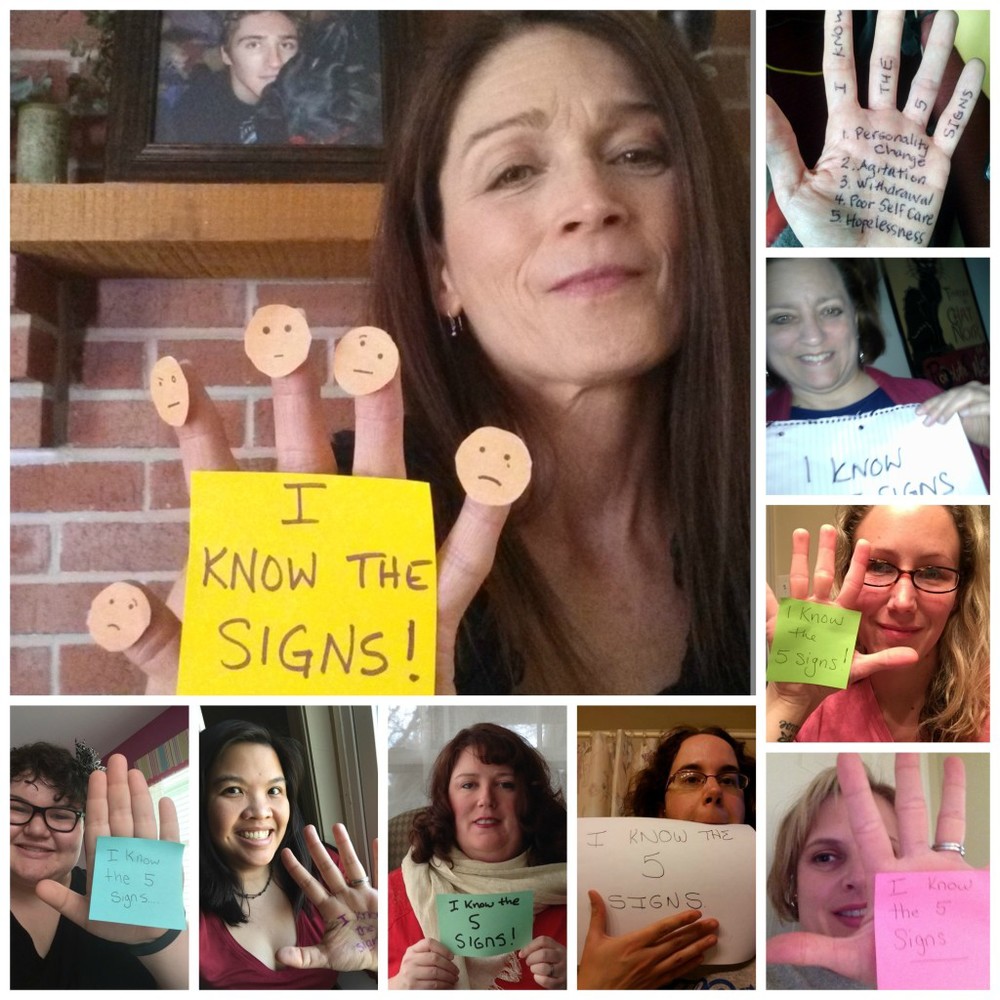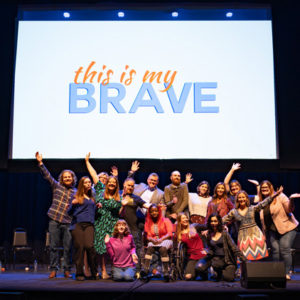Learn the 5 Signs of Mental Health Disorders to Change Direction
This Is My Brave recently was asked to participate in the Campaign to Change Direction to influence the national conversation about mental health, something we’re already working on through our theater productions. We pledged to add our support to the campaign, and members of our cast sent in their social media photos to help raise awareness.

The campaign launched at a mental health summit at the Newseum in DC on March 4, which included a keynote address from First Lady Michelle Obama, an appearance by Academy Award-winning producer of “Silver Linings Playbook,” Brue Cohen, and a performance by G.R.L., a musical girl group that was personally touched by the issue when their lead singer, Simone Battle, died by suicide in September 2014.
Nearly one in every five people, or 42.5 million American adults, has a diagnosable mental health condition. Half of all lifetime cases of mental disorders begin by age 14.
Often our friends, neighbors, co-workers, and even family members are suffering emotionally and don’t recognize the symptoms or won’t ask for help.

Here are Five Signs that may mean someone is in emotional pain and might need help:
Personality Change:
You may notice sudden or gradual changes in the way that someone typically behaves. He or she may behave in ways that don’t seem to fit the person’s values, or the person may just seem different.
Agitation:
You may notice the person has more frequent problems controlling his or her temper and seems irritable or unable to calm down. People in more extreme situations of this kind may be unable to sleep or may explode in anger at a minor problem.
Withdrawal:
Someone who used to be socially engaged may pull away from family and friends and stop taking part in activities he or she used to enjoy. In more severe cases the person may start failing to make it to work or school. Not to be confused with the behavior of someone who is more introverted, this sign is marked by a change in someone’s typical sociability, as when someone pulls away from the social support he or she typically has.
Poor Self-Care:
You may notice a change in the person’s level of personal care or an act of poor judgment on his or her part. For instance, someone may let his or her personal hygiene deteriorate, or the person may start abusing alcohol or illicit substances or engaging in other self-destructive behavior that may alienate loved ones.
Hopelessness:
Have you noticed someone who used to be optimistic and now can’t find anything to be hopeful about? That person may be suffering from extreme or prolonged grief, or feelings of worthlessness or guilt. People in this situation may say that the world would be better off without them, suggesting suicidal thinking.
If you recognize that someone in your life is suffering, now what?
You connect, you reach out, you inspire hope, and you offer help. Show compassion and caring and a willingness to find a solution when the person may not have the will or drive to help him- or herself. There are many resources in our communities. It may take more than one offer, and you may need to reach out to others who share your concern about the person who is suffering. If everyone is more open and honest about mental health, we can prevent pain and suffering, and those in need will get the help they deserve. {Link to Helplines and Resources on the Change Direction website}
About the Campaign To Change Direction
The Change Direction initiative is a collection of concerned citizens, nonprofit leaders, and leaders from the private sector who have come together to create a new story in America about mental health, mental illness, and wellness. This initiative was inspired by the discussion at the White House National Conference on Mental Health in 2013, which came on the heels of the Newtown, Conn. tragedy.
By bringing together this unprecedented and diverse group of leaders we plan to spark a movement that:
- frees us to see our mental health as having equal value to our physical health
- creates a common language that allows us to recognize the signs of emotional suffering in ourselves and others
- encourages us to care for our mental well-being and the mental well-being of others
So what can you do to help?
Visit the Campaign to Change Direction’s website and Take a personal pledge. Pledge to know the Five Signs of emotional suffering and to change the story surrounding mental health, mental illness and wellness. Then share your photo on social media with the hashtag #ChangeMentalHealth. Let’s keep the conversation going.

